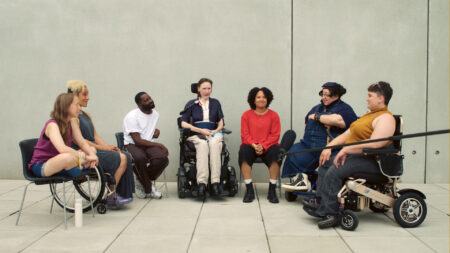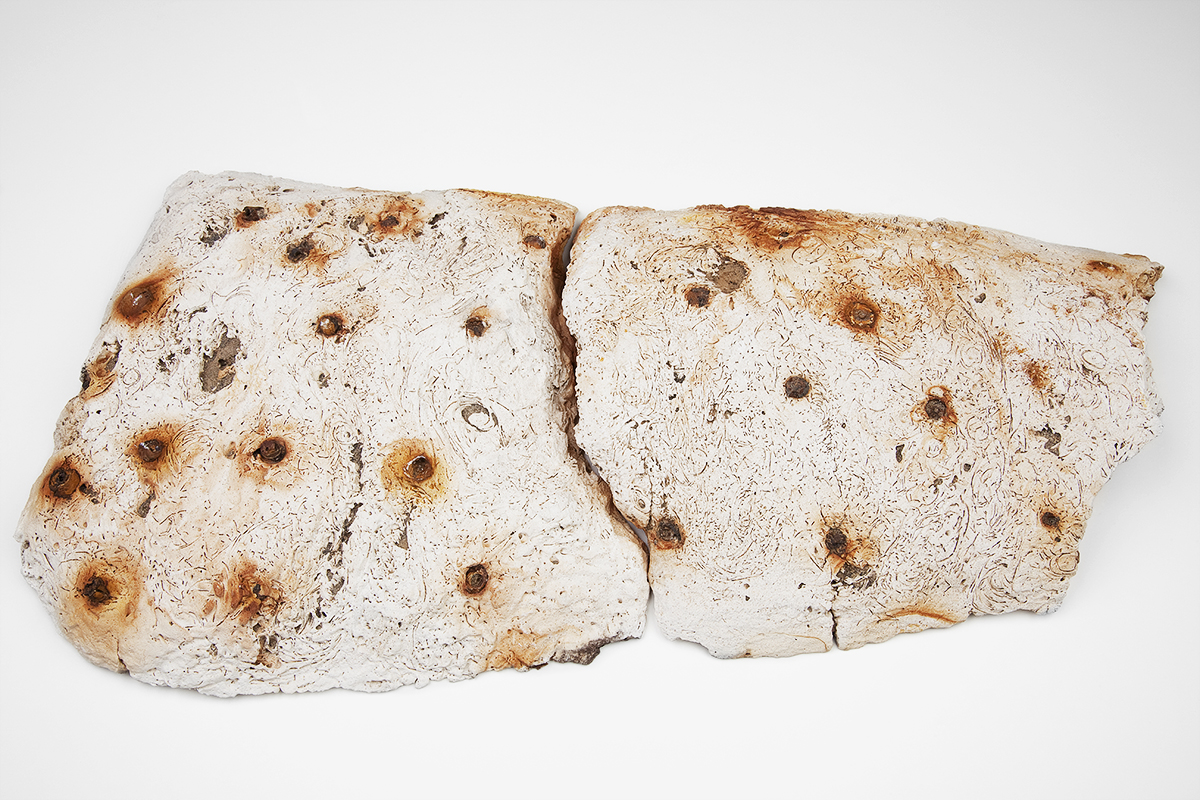Deep Focus
All Objects Are Slippery: Excavations in Santa Barbara County
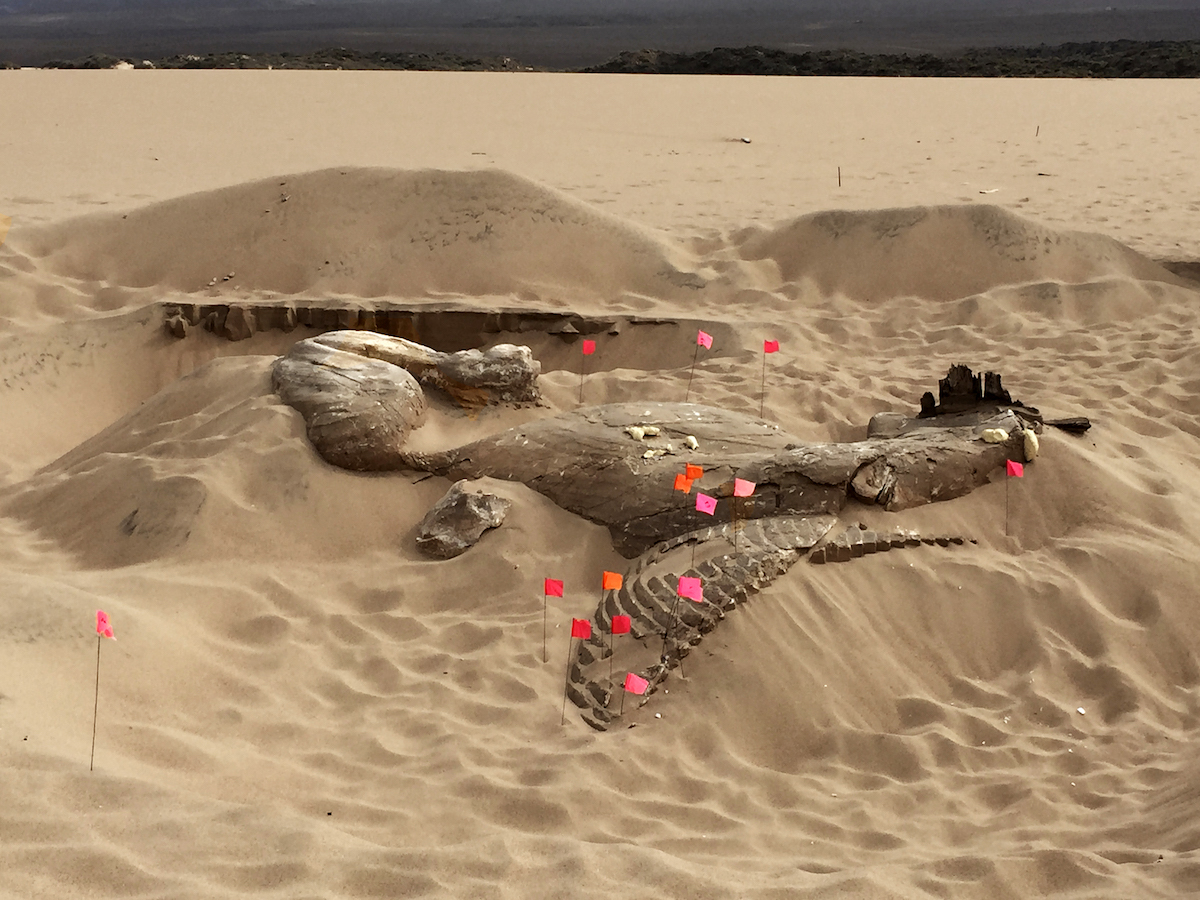
Daniel R. Small. Excavation II, 2016. Made in LA Hammer Biennial 2016. Courtesy of the artist.
A burglary has me thinking about the lives of objects. In February, a pair of strangers kicked in my back door and took, among other things, the jewelry box that held my great-grandfather’s sharpshooter pin. I used to take the pin out just to finger its tarnished surface; I never wore it for fear of demeaning or losing it. Instead of a safeguard for my great-grandfather’s memory, the pin in my hands felt like a mute token of everything I could not access: the history of war and of my family. At the same time, the object in my hand felt familiar, almost warm. The loss of it disorients me.
In the online collection of the National Museum of the American Indian, I study a less familiar artifact: a photograph of a “probably Chumash” bowl found in present-day Santa Barbara County. I study images of its textured surface, the darkened ring around its belly. In 1923, thousands of artifacts from the native Chumash village of Syuxtun were exhumed from the Burton Mound, the site of a burned-down hotel. Rising and falling in a cycle of passive violence, the hotel’s existence was tacitly predicated on the disappearance of this village—the result of Western diseases and missionary work—and the preservation of the lost village resulted only from the hotel’s destruction. I perceive the dark ring on the bowl as the residue of ash, even though I can’t confirm or refute from the information provided that this object came from the burned hotel site. I imagine what it would be like to see the bowl behind museum glass or to touch it.

Daniel R. Small. Excavation II, Made in LA Hammer Biennial 2016. Installation View. Artifacts from the 1923 Ten Commandments Film Set and paintings commissioned for the Luxor Hotel, Las Vegas. Paintings in this series not acquired for this project now hang at the Las Vegas Natural History Museum, along with real artifacts from Ancient Egypt. Courtesy of the artist.
Earlier this month, I did get a chance to share a room with objects from another dig in Santa Barbara County, in the town of Guadalupe. The artist Daniel R. Small created an installation, shown at the 2016 Made In L.A. Hammer Museum biennial, from two interpretations of the Book of Exodus: paintings for a Las Vegas hotel and casino and the excavated set of Cecil B. DeMille’s 1923 film, The Ten Commandments. DeMille didn’t want anyone else to use the set, so he bombed it and buried the props about the same time as archeologists excavated the Burton Mound. At first glance, the movie props imparted the same mute authority as “real” artifacts. It took me a moment to understand the provenance of the props, and, even as my eyes readjusted to the new information, a residue of that museum-ish authority lingered.
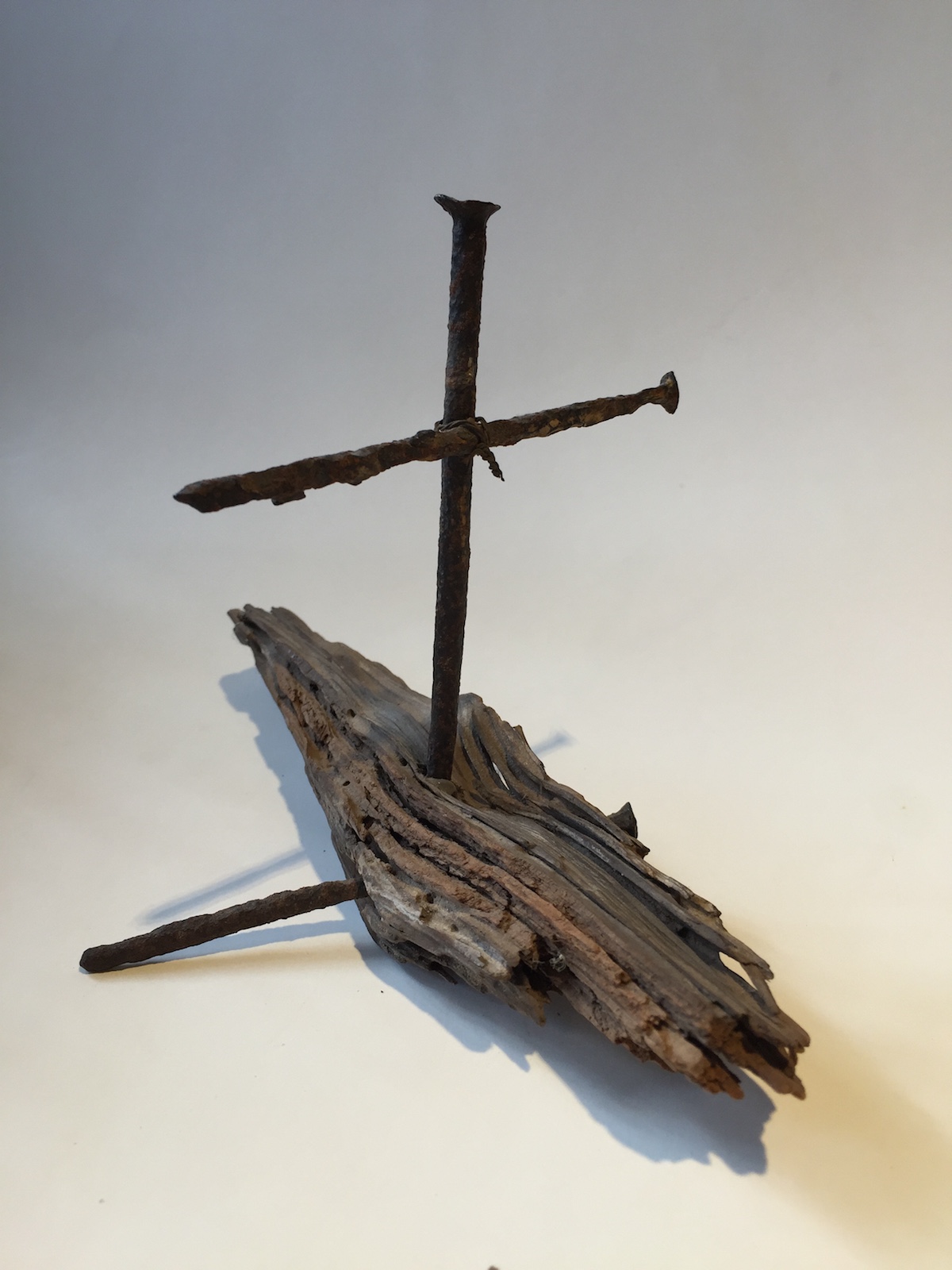
Daniel R. Small. Excavation II, Made in LA Hammer Biennial 2016. Cross made by Attilio DeGasparis out of materials from the Ten Commandments film set. Courtesy of the artist.
I saw several of the objects up close at Small’s studio. He told me about the objects and the tales that grew out of them. A Guadalupe local named Attilio DeGasparis, who appeared as a child in DeMille’s film, spent his life scavenging the set for pieces and making crosses from them. He was buried with one of these crosses, and about a decade ago, writers from the SciFi Channel learned of the DeGasparis story via an early cut of a documentary about the excavation. The story made its way into a science-fiction drama, described by Small as “the movie about the movie about the movie about the book about the event that probably never happened in the first place.” He also told me about the possible imprint left by someone who, like the Chumash, disappeared from California as the result of violent American policies. Japanese immigrants, who during World War II would be forced into internment camps, did most of the labor to create DeMille’s set. In the same way that I use my so-called knowledge of historical context to see ash on the probably-Chumash bowl, Small sees the fingerprint of a Japanese set-builder on a shapeless piece of plaster. He openly admits this fingerprint is “fantasy or speculation,” and I admit the same about the ash. It’s possible we are both right, but that ultimately matters little to the stories we create, that potentially shape belief.
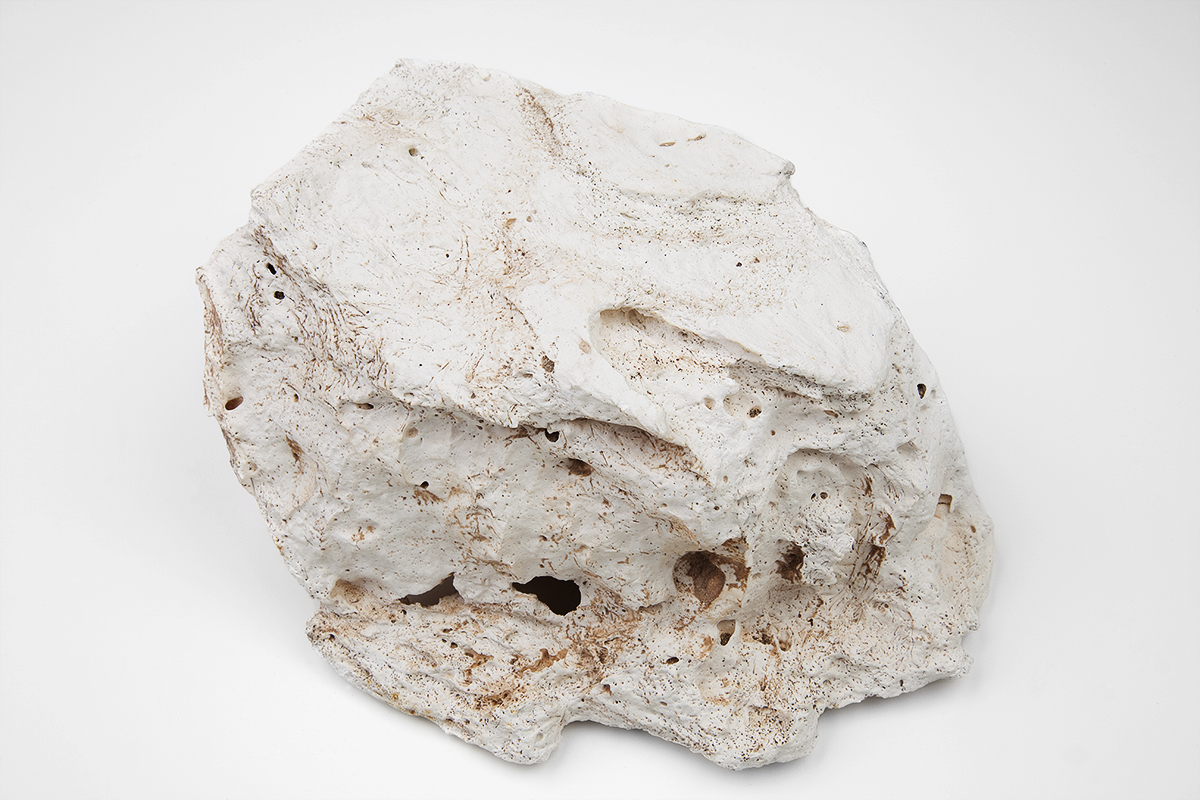
Daniel R. Small. Excavation II, Made in LA Hammer Biennial 2016. Plaster joint from Ten Commandments film set, with possible finger print. Courtesy of the artist.
On another amorphous chunk from the DeMille set, decades of erratic wind have etched little whorls. The object is also full of horsehair; someone thought it would be a good idea to shave all the horses in town to create a binder for the plaster. This plaster piece illustrates this shaved-horse tale, but doesn’t tell it on its own. If the story was never spoken, it would have been forgotten. At the same time, the material presence of the object evokes more than words ever could. Getting lost in these objects has value, but that value is not a solidified version of history. If anything, the historical truth that these objects contain is history’s constant negotiation, its slipperiness. People can animate the inanimate in this way, persistently. The only permanence objects hold is that of loss, and this is because they tease our hope for transcendence. The probably-Chumash bowl, the possible fingerprint, the sharpshooter pin: all of these things pull at the desire to restore what’s already gone, at remorse for national violence. But the inanimate cannot recall what’s really lost: the memories of the people who first touched them.
